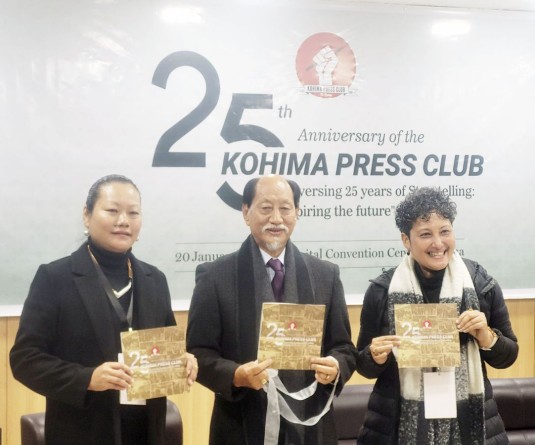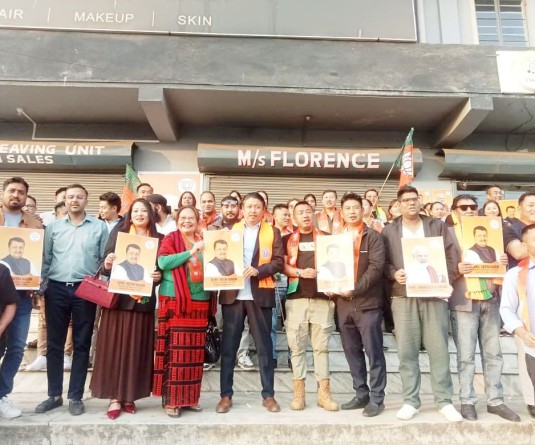.jpeg)
Morung Express news
Kohima | December 8
It would be unimaginable to think of a serene hill slope like Kisama nestled in the foothills of Japfü Mountain pervaded by pollution. However, short it maybe, the 10 days Hornbill Festival is no longer unfamiliar to air or waste pollution attributed by humans.
According to a team of scientists from the Nagaland Pollution Control Board (NPCB) who were stationed at a stall inside Bamboo Pavilion, the air quality at Kisama has gone above the permissible level which normally stands at 100 Air Quality Index.
A first of its kind initiative by the NPCB, the board is also making a comprehensive study of waste management generated during the festival days, monitoring it on a daily basis. After assessment, the Kohima Municipal Committee (KMC) collects the wastes for disposal. In this regard, the festival also remained considerably clean as compared to other years.
The scientists informed The Morung Express that the air quality index crossed 100 and stood around 150.
100 AQI value or below generally corresponds to an ambient air concentration that equals the level of the short-term national ambient air quality standard for protection of public health and thought to be safe. When AQI values are above 100, air quality is unhealthy: at first for certain sensitive groups of people, then for everyone as AQI values get higher.
To ascertain the air quality, the NPCB officials said they have placed samplers for respirable dust and particulate matter in strategic locations. The two machines have been placed above the Bamboo Pavilion and the main arena where more crowds are seen.
Air is drawn through a size-selective inlet and through some sort of filter media. Further explaining the process, the scientists said filter papers are kept for 24 hours to absorb the moisture content and kept in the machine for 8 hours; and again kept back for 24 hour for desiccators to ascertain the final air quality.
"We also need put into account weather conditions, flow of meter set aside, the time taken for the machine to ascertain the final result," the scientists added.
Attributing the cause of low air quality to various factors, the NPCB officials said that these are however due to short term reasons; one major reason being the drastic increase in the footfall of visitors.
Along with the rise in visitors is the increase in the number of vehicles which directly emits considerable amount of smoke. Other causes included increase in fire-making in almost all the areas around Kisama, and high number of people smoking. On the first day of the festival, it was found that air quality was lowest; reasons of which could be the heavy preparation and the number of visitors.
The scientists however said on other days of the year, it is not like this. In a festival of this kind, they admitted that features like fire-making, movement of vehicles etc are unavoidable. Smoking increases especially in the evening, they observed.
However, the daily records of the air quality are yet to be given out and the cumulative report would be provided only after the festival.
In this regard, the NPCB informed that suggestive measures along with the assessment will be given to the State Government at the end of the festival so that necessary steps and preventive measures can be taken in forthcoming festival.





